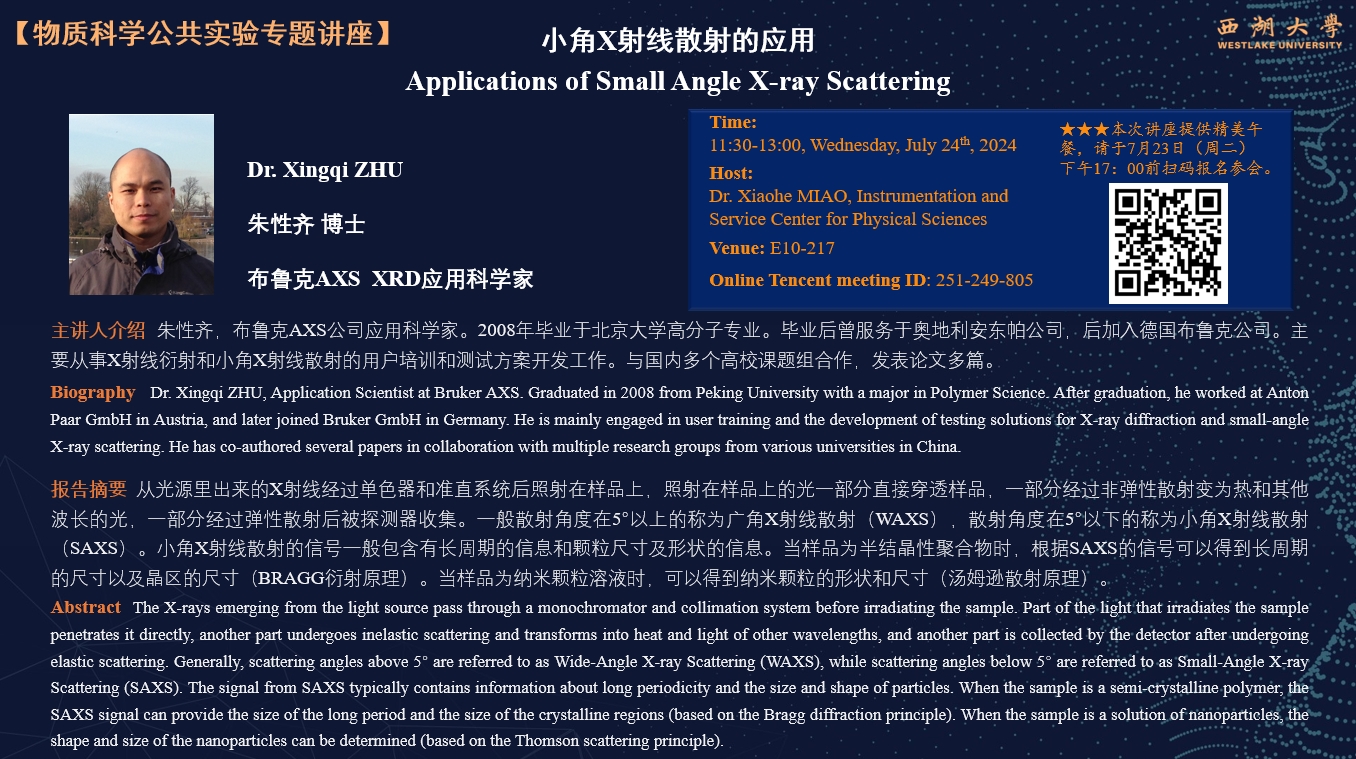2024年7月24日(周三)11:30-13:00,云谷校区E10-217会议室,将开展”物质科学公共实验平台专题讲座”之“小角X射线散射的应用”
主讲人: 朱性齐 博士,布鲁克AXS XRD应用科学家
主题:小角X射线散射的应用
摘要:
从光源里出来的X射线经过单色器和准直系统后照射在样品上,照射在样品上的光一部分直接穿透样品,一部分经过非弹性散射变为热和其他波长的光,一部分经过弹性散射后被探测器收集。一般散射角度在5°以上的称为广角X射线散射(WAXS),散射角度在5°以下的称为小角X射线散射(SAXS)。小角X射线散射的信号一般包含有长周期的信息和颗粒尺寸及形状的信息。当样品为半结晶性聚合物时,根据SAXS的信号可以得到长周期的尺寸以及晶区的尺寸(BRAGG衍射原理)。当样品为纳米颗粒溶液时,可以得到纳米颗粒的形状和尺寸(汤姆逊散射原理)。
Abstract:
The X-rays emerging from the light source pass through a monochromator and collimation system before irradiating the sample. Part of the light that irradiates the sample penetrates it directly, another part undergoes inelastic scattering and transforms into heat and light of other wavelengths, and another part is collected by the detector after undergoing elastic scattering. Generally, scattering angles above 5° are referred to as Wide-Angle X-ray Scattering (WAXS), while scattering angles below 5° are referred to as Small-Angle X-ray Scattering (SAXS). The signal from SAXS typically contains information about long periodicity and the size and shape of particles. When the sample is a semi-crystalline polymer, the SAXS signal can provide the size of the long period and the size of the crystalline regions (based on the Bragg diffraction principle). When the sample is a solution of nanoparticles, the shape and size of the nanoparticles can be determined (based on the Thomson scattering principle).
时间:2024/07/24 11:30-13:00
地点:云谷校区E10-217会议室
腾讯会议链接: https://meeting.tencent.com/dm/UJqJAP482FKv
#腾讯会议号:251-249-805


